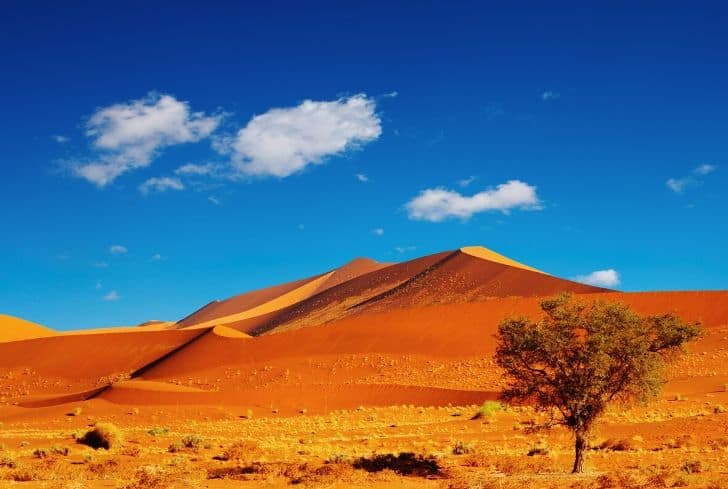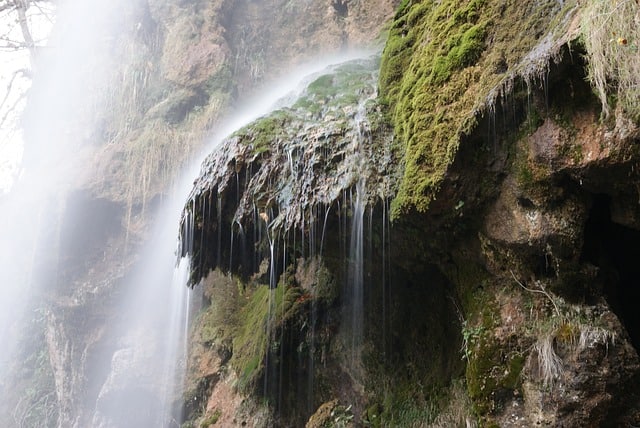Oceanography vs Marine Biology (Are They Same or Different)

Ocean depths are home to the most complex life forms. Over the centuries, the deep waters also have given birth to myths, legends, and mysteries that are unexplainable by mankind.
Even though the ocean is the heart of the Earth and without it, we cannot survive, we know very little about oceans. That’s where ocean exploration comes into play. Exploring the ocean is not about wandering in hopes of finding answers but a systematic approach of unveiling everything that is classified as ‘alien’ or ‘unusual’. It is also about making new discoveries. For instance, there are an estimated 1 million species of marine life, close to 228,450 of which we’ve identified, named, and classified.
What is Oceanography?
Oceanography is an interdisciplinary science that studies the oceans and seas of the world. It covers a wide range of topics including the ever-dynamical interactions in the marine ecosystem, plate tectonics, seabed geology, and ocean currents. Fundamentally, oceanography goes hand in hand with physics, chemistry, mathematics, biology, and geology.
Besides unraveling the mysteries and unknowns of the ocean, Oceanographers also study, understand predict how oceans work, and help us to conserve marine resources. Oceanographic studies also shed light into,
- Why should we care about marine life?
- Does it matter if a species extinct or endanger?
- How life in the oceans and land are linked?
What is Marine Biology?
On the other hand, marine biology, is the study of marine life, right from microplanktons to plants and animals in the oceans and saltwater environments. In reality, marine biology is closely related to oceanography, and to have a full understanding of marine biology, it is important to have some knowledge of oceanography.
Marine Biology’s range is quite broad; specializations can be based on a single species, family, behavior, or ecosystem. For example, marine biologists may choose to study a single species of fish or all fish varieties that are native to a climate or region.
Like oceanography, marine biology is also interdisciplinary where cellular biology, chemistry, ecology, geology, meteorology, botany, genetics, molecular biology, physical and biological oceanography, and zoology intersect.
Oceanography Isn’t the Same As Marine Biology
Oceanography and Marine Biology have lots of overlap of course, but the difference is pretty clear. To better understand what each emphasizes, we need to understand the work of oceanographers and marine biologists.
Oceanographers usually study one of the four basic areas of oceanography:
1. Biological Oceanography
It is the study of the ocean through the lens of marine life, its distribution, abundance, environmental interaction, and predation. Biological Oceanographers look into the processes that lead to the unique behavioral and reproductive patterns of marine organisms. They will also study the ocean’s chemical makeup and ecology to better understand relationships in the oceans. Any sudden shift in the chemical profile of the ocean has a profound effect on its inhabitants.
Biological oceanography is similar to marine biology, but they are distinct and should not be conflated.
2. Chemical Oceanography
It studies ocean chemistry. It is a field that is very much in the exploratory phase. Chemical oceanography can be further divided into marine chemistry (studies the concerned with chemical constituents of seawater) and marine geochemistry (studies geological processes, the chemistry of ocean floor, and the role of microbes in the formation or alteration of the ocean’s geology.
Ocean chemistry provides a window into the origin and evolution of marine life, chemical mass balance, ocean sediments, and climate. Chemical oceanographers’ majorly look into ocean acidification and its effect on ecology and the influence of changing geology and biological activity in the ocean. They also collaborate with biological and physical oceanographers to study human-induced marine pollution and to protect and preserve the marine ecosystem.
3. Physical Oceanography
Studies ‘why’, ‘where’, and ‘how’ waves, tides, and currents work. Physical oceanographers look into the interaction of the ocean with the atmospheric factors including temperature, salinity, density, wind speed, tides, eddies, and gyres. They also seek answers to coastal erosion, ocean circulation, and fluid motion. Physical mechanisms responsible for sea ice and polar ice sheet distribution are also the focus area of the physical oceanographers.
Physical Oceanography is further divided into Descriptive and Dynamical Physical Oceanography. Descriptive Oceanography studies the ocean through numerical models and fluid motions. While Dynamical Physical Oceanography deals with the motion of fluids and ocean currents.
4. Geological Oceanography
Also referred to as geophysical oceanography, Geological Oceanography is the study of the ocean floor and many interesting formations under the water – mountains, volcanoes canyons, and valleys. For example, the Mid-Ocean Ridge, the longest continuous mountain chain on the planet is a hot research topic among geological oceanographers.
Stretching over 40,000 miles (mostly underwater), the Mid-Ocean Ridge is a divergent plate boundary and it represents one of the most important geologic phenomena that shaped the earth.
The results of geological oceanographic studies also help us understand and evaluate future societal issues including global warming.
What Do Marine Biologists Study?
A marine biologist focuses on life ocean supports. Finding new species, cataloging, and studying A-Z about them is the main focus area of marine biologists. They also study inter- and intra-species interactions. For example, mutualism between clownfish and sea anemone or commensalism between imperial shrimp and sea cucumber.
Some marine biologists study and document the history of micro and macro-organisms. They look at the evolutionary profile and fossil records and compare them to the new or current species.
In addition to studying aquatic fauna and flora, marine biologists might also study how human interactions and behaviors affect ocean environments. They also largely study aquatic life forms to produce bioactive drugs or biological markers.
As climate change progresses, marine biologists will evaluate ocean acidification and ocean warming. They study which aquatic life form is being impacted by the fastest and formulate protective measures. Environmental marine biologists may have a prominent role in figuring out the impact of pollution, oil spills, the use of pesticides, and artificial fertilizers on marine ecosystems.
A Brief History Of Oceanography And Marine Biology
Oceanography and Marine Biology may be relatively young fields of study but their roots extend back to pre-historic times.
References to the ocean as a means of transportation can be seen in Homer’s “The Iliad” and “The Odyssey”. Specific references to marine life date back to 384 – 322 B.C. where Aristotle identified marine organisms including crustaceans, echinoderms, mollusks, and fish. Because the first observations on marine life were by Aristotle, he is referred to as the ‘Father of Marine Biology”.
The world’s first seafarers, Polynesians navigated the ocean using their knowledge of stars, storms, tides, and currents.
In the early 1400s, European explorers used the ocean to establish new trade routes. Prince Henry of Portugal established the first-ever oceanographic institute where merchants and scholars can learn more about oceans.
However, modern oceanography did not emerge until the late 19th century when America, Britain, and Europe launched combined sea expeditions. Challenger Expedition (1872 to 1876) was the first organized scientific expedition.
The fruit of the HMS Challenger’s voyage was the“Report of the Scientific Results of the Exploring Voyage of HMS Challenger during the years 1873-76”. The 30,000 pages had recordings of the ocean’s temperature, currents, deposits, basins, and detailed information about 4717 new species. It also led to the discovery of the mid-Atlantic Ridge.
The subsequent expeditions led to the establishment of various marine laboratories – Station Biologique de Roscoff in France being the oldest.
Though modern oceanography took off during WWII, the real developments happened during the 1970s with the launch of SEASAT, the first civilian oceanographic satellite by NASA.
Today, Oceanography and Marine Biology are ‘the hottest’ science fields.
Scope And Significance Of Oceanography And Marine Biology
The ocean covers more than 70% of the earth’s surface and contains 99% of the living space on our planet. So, it is important to understand the oceans better for preserving and protecting this complex ecosystem.
Scope of oceanography and marine biology are majorly in,
- Information from exploration studies is important to find new ocean resources, management, and conservation.
- Oceans produce more oxygen – approximately 70% – than the Amazon. Through oceanographic studies, we can establish the baseline information needed to better understand environmental change, fill gaps about rains and droughts, and the carbon cycle.
- Mangrove, Salt Marshes, Seagrass, Beds, and Coral Reefs support a large number of different species – that is, the biodiversity of the ocean is high. Marine biological studies play a crucial role in identifying, classifying, and conserving this very same biodiversity.
- The continental shells and ocean floor are the storehouses of natural resources including gas oil.
- The oceans are equally important in the economy. Revenue related to the ocean is mainly from food, tourism, shipping, and biomedical products. Hence knowledge gained through scientific studies is vital to respond appropriately in the face of ocean disasters and to save the economy.
References:
https://www.sciencedirect.com/topics/earth-and-planetary-sciences/physical-oceanography
https://www.nationalgeographic.org/article/deep-dive-oceanography/
https://algaeresearchsupply.com/pages/a-brief-history-of-oceanography
https://pdfs.semanticscholar.org/5227/a491754dcf2a314926fc02872abcd24f3a8c.pdf






